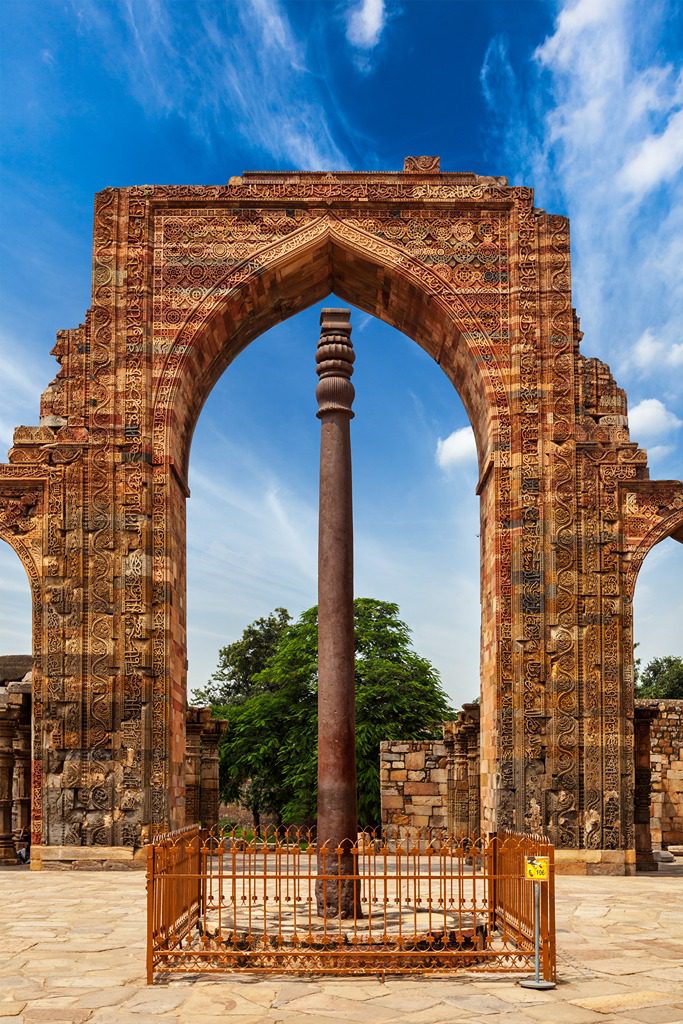When we think of technological progress, we tend to view it as a linear process that has only occurred in the last few centuries. However, history tells a different story. Throughout time, there have been civilizations that were far more advanced than we often give them credit for. In this article, we will explore some examples of ancient civilizations that produced marvels in engineering, chemistry, mechanical, and other spheres of life that surpassed our modern understanding. We will also highlight the Ashoka Pillar, a 5000-year-old iron structure found in multiple locations in India, which stands as a testament to the advanced metallurgy techniques of ancient civilizations.
Ancient Egypt
One of the most well-known ancient civilizations that produced marvels in engineering and architecture is Ancient Egypt. The Great Pyramid of Giza, which was built around 2550 BCE, is one of the Seven Wonders of the Ancient World. The pyramid is made up of over 2 million stone blocks, each weighing between 2 and 80 tons. It is estimated that it would take around 5.5 million tons of limestone to build the pyramid, a feat that is difficult to comprehend even with modern technology.
Another example of Egyptian engineering prowess is the Temple of Karnak, which is one of the largest religious structures ever constructed. The temple complex covers over 200 acres and was built over a period of 1500 years, starting in the Middle Kingdom (ca. 2055–1650 BCE). The temple is known for its grand hypostyle hall, which has 134 massive columns that are 23 meters tall and weigh around 70 tons each.
Ancient India
Another ancient civilization that produced marvels in engineering is Ancient India. The Ashoka Pillar, which dates back to around 250 BCE, is a remarkable example of ancient Indian metallurgy. The pillar, which is made of wrought iron, is over 7 meters tall and weighs around 6 tons. Despite being exposed to the elements for over 5000 years, the pillar remains corrosion-free and stands tall. This is a testament to the advanced metallurgy techniques used by ancient Indian blacksmiths.

Ancient India was also known for its advancements in mathematics, astronomy, and medicine. The concept of zero was first introduced in India around the 5th century CE. Indian astronomers were able to accurately calculate the movement of celestial bodies and predict eclipses. Ayurveda, the ancient Indian system of medicine, has been practiced for over 5000 years and is still used today.
The extraction of copper and bronze is an ancient technique that humans have been using for thousands of years. In fact, copper was one of the first metals to be extracted and used by humans.
The extraction of copper involves several steps. First, copper ore is mined from the ground. The ore is then crushed and ground into a fine powder. The powdered ore is then mixed with water and chemicals to create a slurry. The slurry is then sent to a flotation cell, where air is blown into the mixture. The air bubbles attach to the copper particles, causing them to rise to the surface. The copper can then be skimmed off the top.
After the copper has been extracted, it can be purified through a process called smelting. Smelting involves heating the copper to a high temperature in a furnace. This causes impurities to rise to the surface, where they can be removed.
Bronze, which is an alloy of copper and tin, was also an important metal in ancient times. The process of making bronze involves melting copper and adding tin to it. The resulting alloy is stronger and more durable than pure copper. Bronze was used to make weapons, tools, and other objects that required strength and durability.
The techniques for extracting and working with copper and bronze were developed by ancient civilizations such as the Mesopotamians, Egyptians, and Greeks. These techniques were refined over time and passed down through generations. In fact, the Bronze Age, which lasted from around 3300 BCE to 1200 BCE, is named after the metal because of its widespread use during that time.
Ancient Greece
Ancient Greece is known for its advancements in philosophy, literature, and art. However, the Greeks were also pioneers in the field of engineering. The Antikythera Mechanism, which dates back to around 150-100 BCE, is a complex astronomical device that is considered to be the world’s first analog computer. The device was able to predict the positions of the Sun, Moon, and planets, as well as eclipses and other celestial events.
The Greeks were also known for their advancements in architecture. The Parthenon, which was built between 447 and 438 BCE, is considered to be one of the greatest architectural achievements in history. The temple is made of marble and has 46 columns, each of which is over 10 meters tall and weighs around 50 tons.
Conclusion
The examples discussed in this article show that ancient civilizations were far more advanced than we often give them credit for. They produced marvels in engineering, architecture, mathematics, astronomy, medicine, and other spheres of life that surpassed our modern understanding. The Ashoka Pillar, a 5000-year-old iron structure found in multiple locations in India, is a remarkable testament. Today, copper and bronze are still important metals in modern industry. They are used in electrical wiring, plumbing, construction, and many other applications. While modern techniques for extracting and working with these metals have evolved and become more efficient, they are still based on the ancient techniques developed thousands of years ago
























